Immersive + Playful Learning
Inventure Lab is a senior design studio capstone project completed by myself, Faith Kaufman, Alex Palatucci, Ty Van De Zande, and Noah Johnson. Our mission is to create playful and immersive educational experiences that extend learning outside of the classroom. We combined the words “Invention” and “Adventure” to create Inventure Lab. Please browse our Project Blog, which we developed throughout the semester. It includes our research, interviews, early iterations, prototypes, and all of our sourced material on biomimicry.
Skills
Rendering + Service Blueprint + User testing workshops + Stakeholder mapping + Scenarios + Research + Collaboration + Ai + Sketching + Curriculum Design
Inventure Lab Worker Bee Workshop, Spring 2018
Poster Series
While only the Worker Bee Workshop came to fruition, we envision Inventure Lab having series’ of workshops focused around a common theme. The theme portrayed in the posters is biomimicry, which we explore through four keystone species that make this broad and challenging concept more tangible for kids.
Inventure Lab Website Walkthrough
Our website platform can be used by educators and administrators looking to bring Inventure Lab to their schools as an activity during recess, a summer camp, etc. It is also a place where parents can sign their children up for workshops, and gain a better understanding of the learning objectives behind our program.
Created by Noah Johnson for Inventure Lab senior capstone project.
Final project poster for our Capstone Exhibition (displayed in Margaret Morrison Hall, Carnegie Mellon).
Final Exhibition
The collection of all our work was displayed in the Margaret Morrison building at CMU. We received incredibly positive feedback from professors, students, alumni, and friends.
Our Team
(from left to right) Alex Palatucci; Gillan Johnson; Noah Johnson; Faith Kaufman; Ty Van De Zande.
The Inventure Lab Brochure
Noah designed a brochure that would be distributed to local museums for interested families, local school administrators, etc. It would also be used in meetings with faculty and administrators looking to bring Inventure Lab to their school.
Service Blueprint
In order to localize our project to the Pittsburgh community we explored the system of Inventure Lab under the Carnegie Museum of Natural History’s outreach program. With this established base, Inventure Lab is then able to connect with other museums, schools, and community centers much faster and with greater ease. The three critical moments we see happening in this blueprint are depicted in yellow and visualized below.
Critical Moments within the Inventure Lab System Design
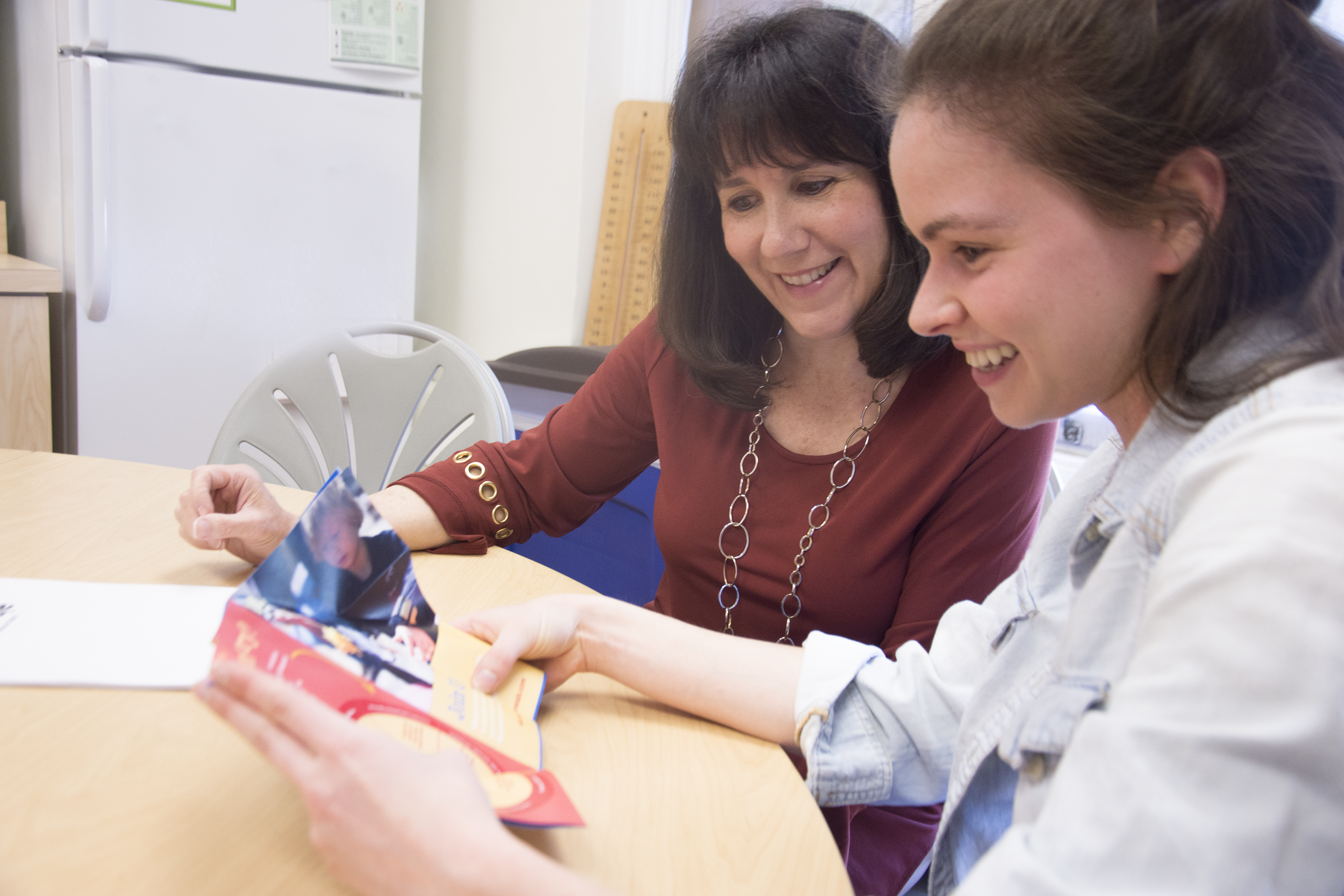
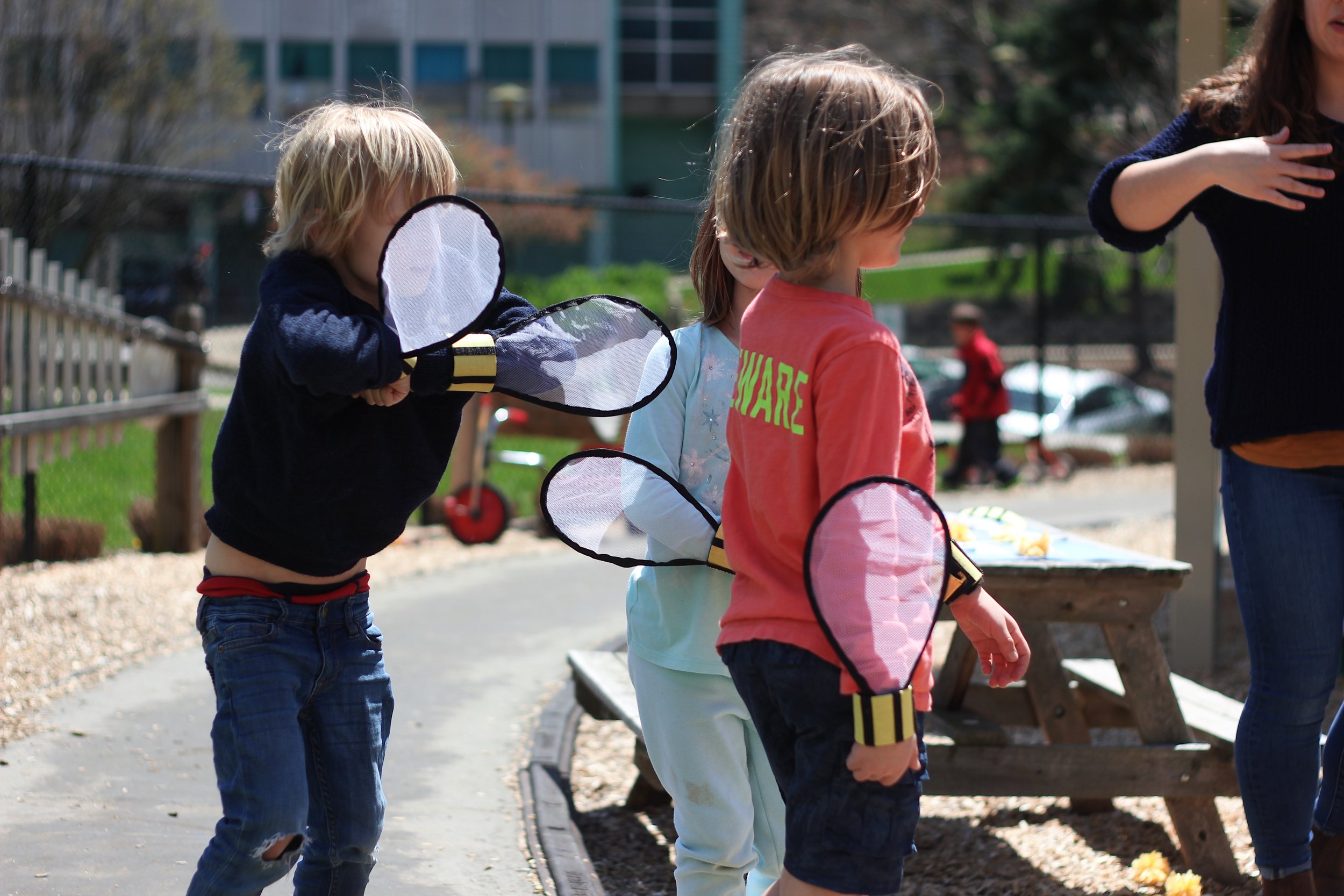
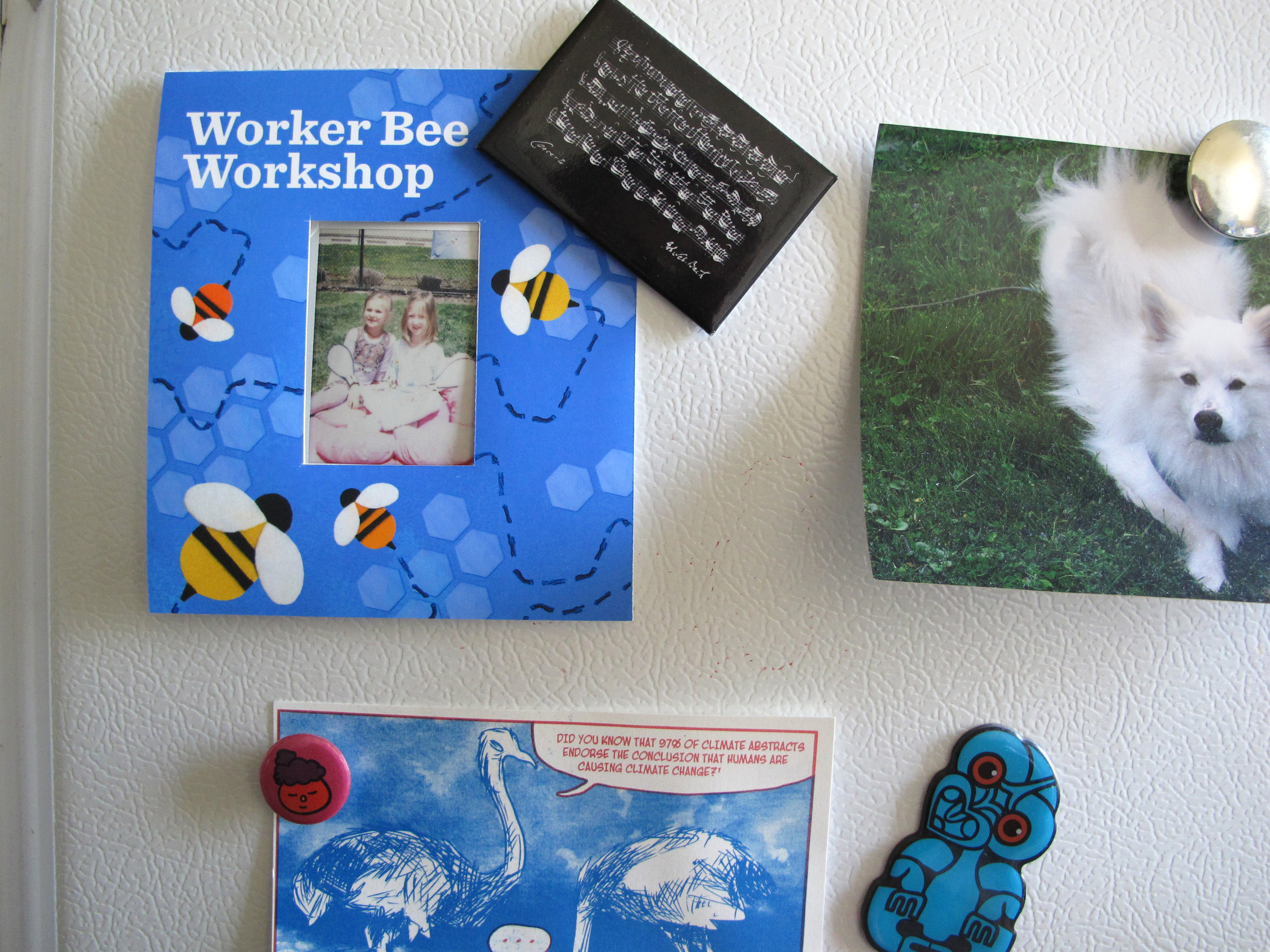
Stakeholder Map
Our plan for Inventure Lab and its development and expansion is explored through a timeline. The Children’s School at CMU is our main partner for testing our ideas and getting feedback from children, teachers, and parents. We then see an adoption of Inventure Lab under the Carnegie Museum of Natural History, with continuous testing at both of these sites. Finally, we plan for our program to be adopted by local schools, museums, and community centers; building relationships with these stakeholders and expanding the number of children Inventure Lab reaches.
Biomimicry Principles Diagram
Our group did extensive research into the concept of biomimicry, which describes human emulation of nature’s processes and systems. Biomimicry has been used by scientists and designers for the past two decades but is relatively unknown to many, especially kids. Inventure Lab fills the holes that the biomimicry curriculum currently has. We focus on play and immersive learning to introduce this rather challenging concept to kids, which is then reinforced back in the classroom by teachers through more traditional learning methods.
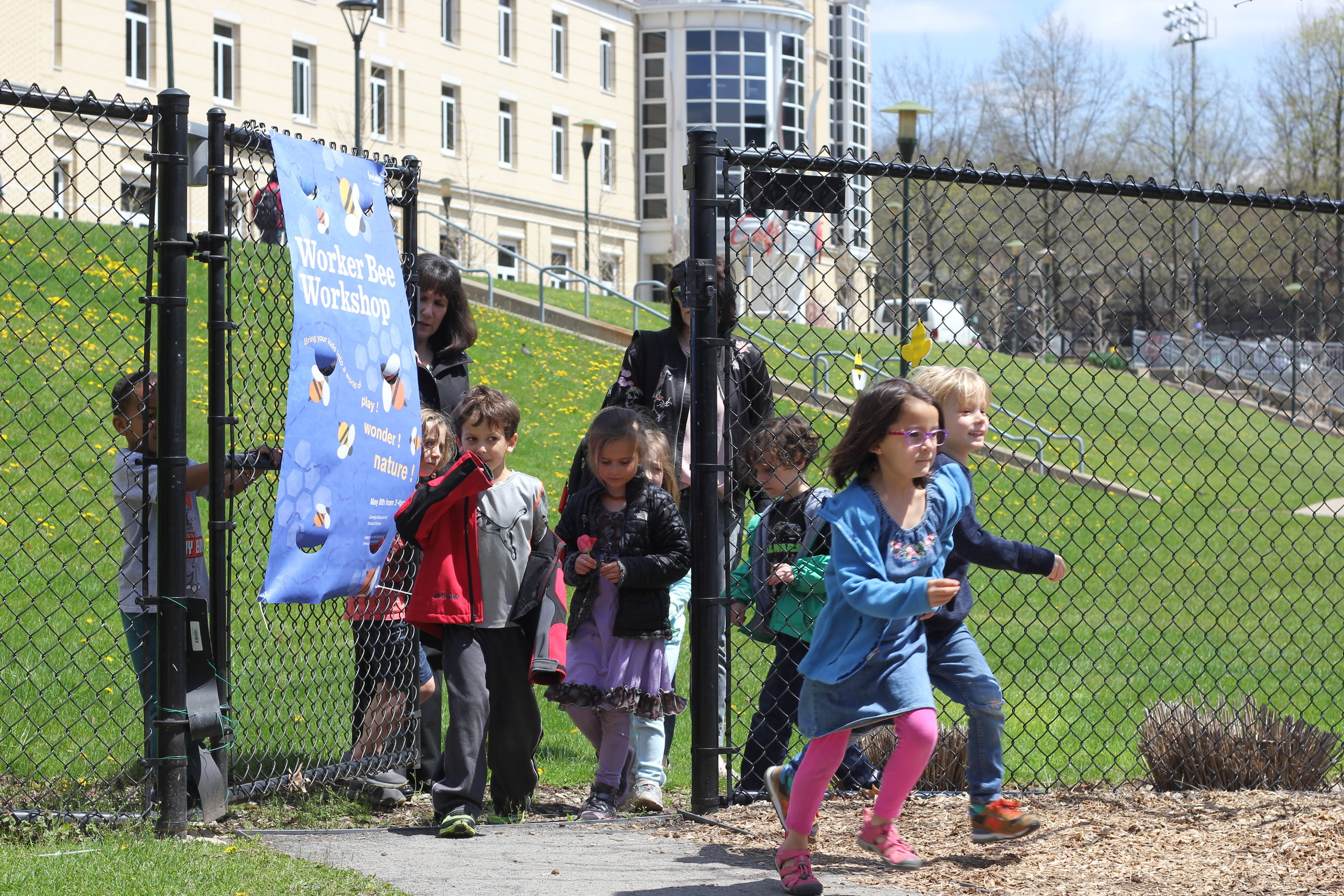
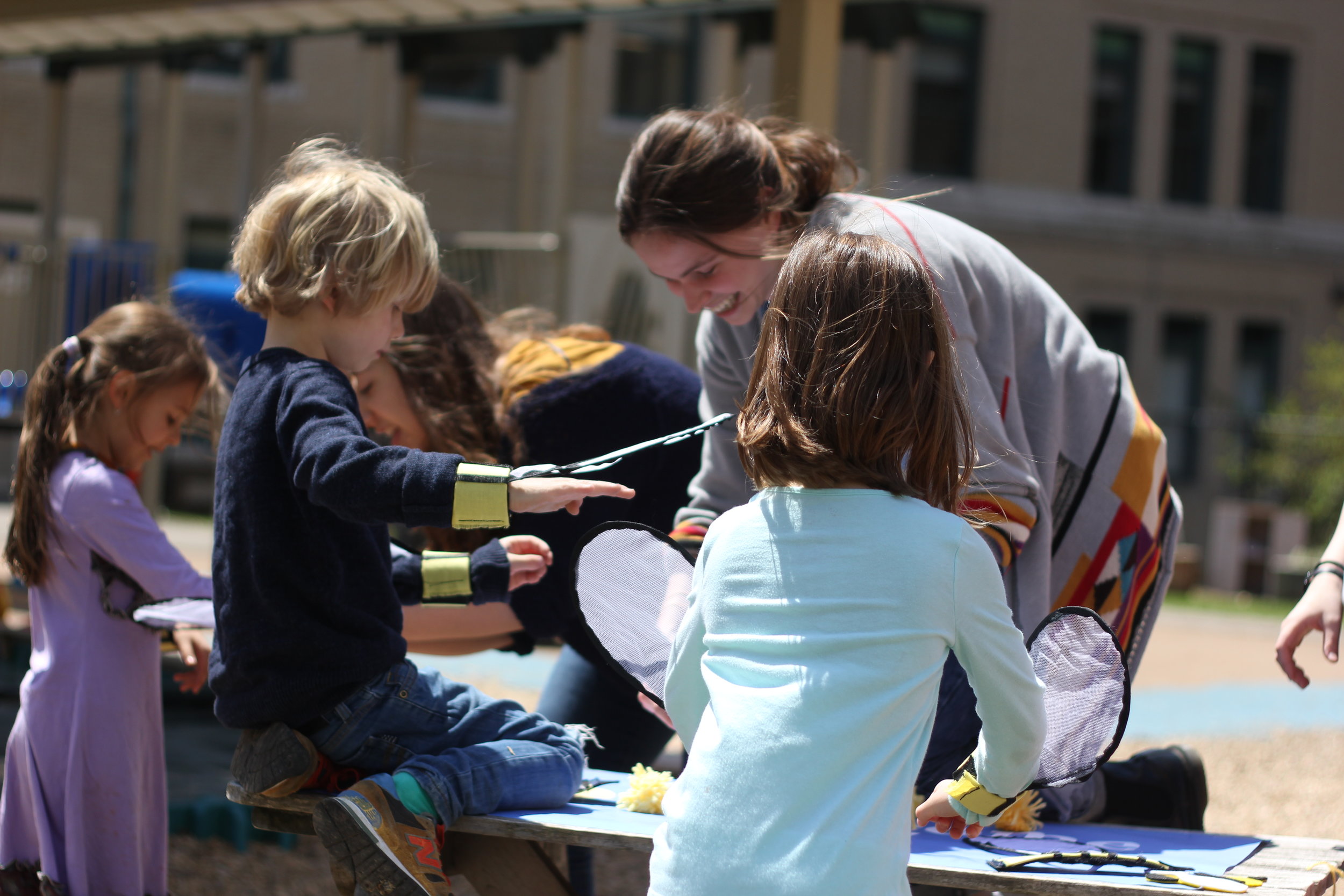
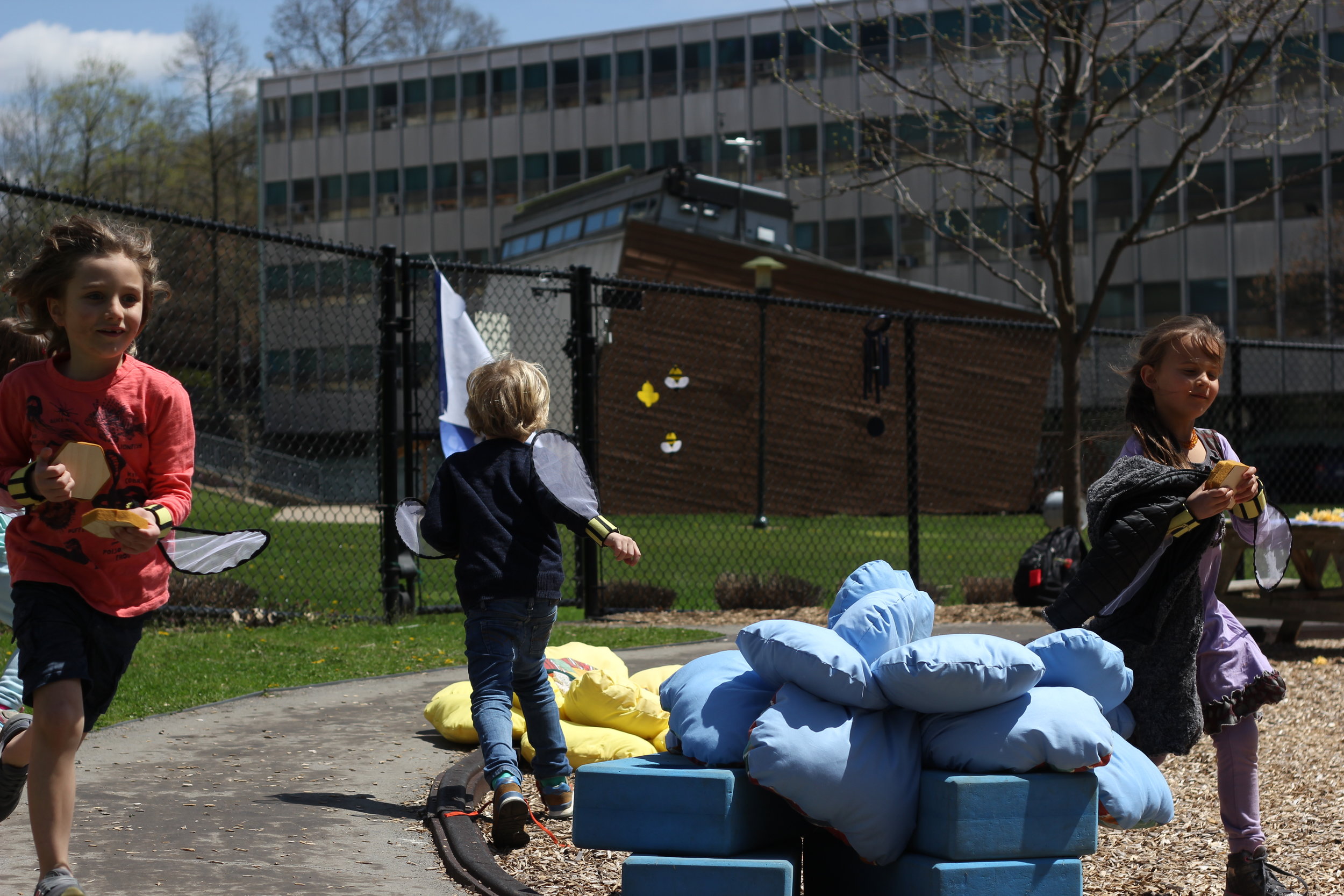
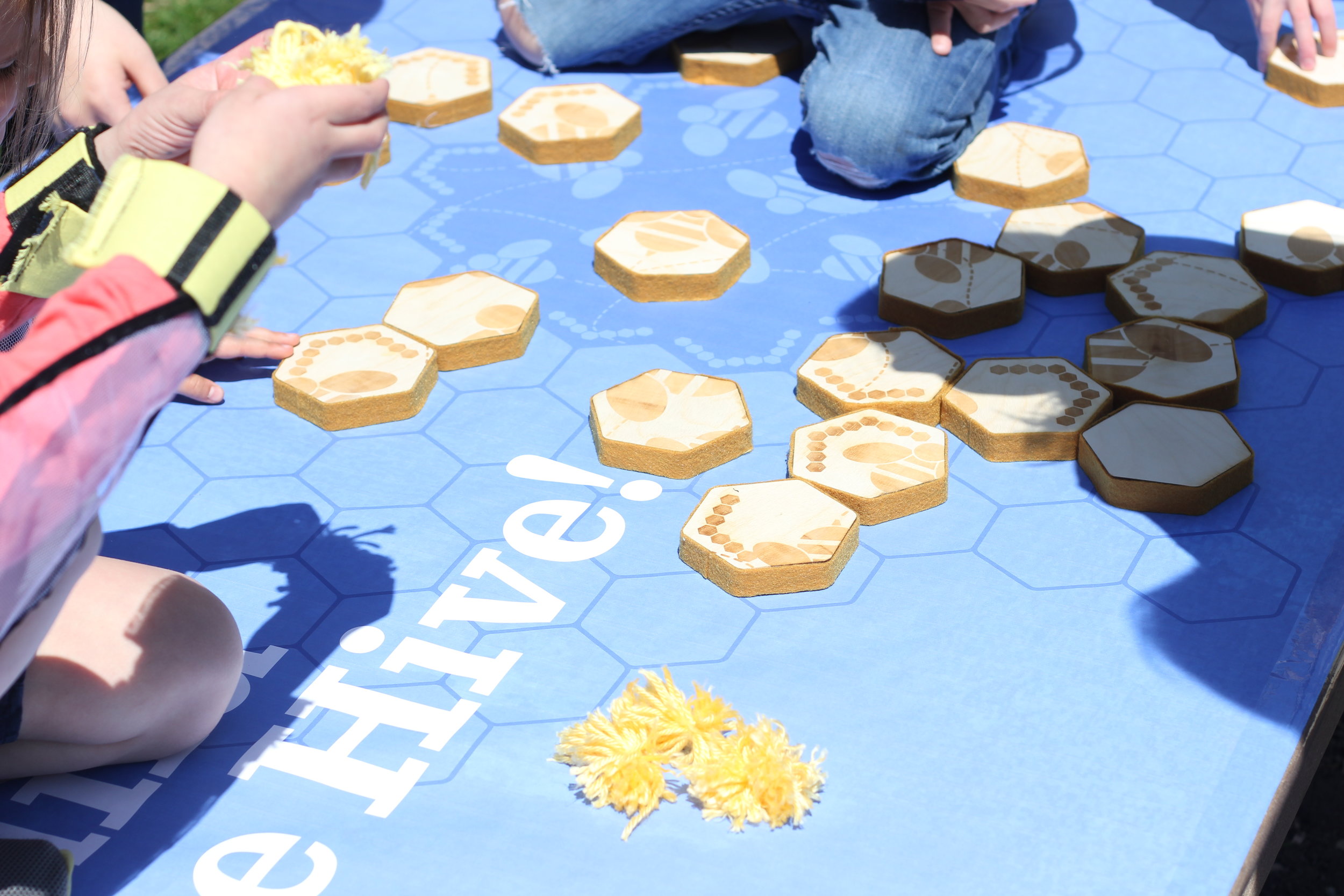
What we made
We designed the bee wings so that they would function as the collectors of pollen. Bees collect pollen through hairs on their legs, however we felt it would be easier for kids to explore the principles of pollination if they were on their arms. Ty fabricated the wings, which are comprised of yellow fabric, transparent mesh, wire, black fabric, and strips of black Velcro. We created pom poms out of yellow yarn to make our pollen, which sat atop the flower centers.
Flowers in Playground Area
We scattered the flowers throughout the playground area for kids to explore and transfer pollen.
Creating our activities
Since we moved forward with the Worker Bee workshop we developed a series of activities that help to put the kids into the mindset of a bee. We created larger than life flowers out of quilted fabric that was donated from the Children’s School and bought additional fabric and stuffing to create the petals. Alex and I worked on the flowers and hive puzzle. Noah and Faith worked on the brand materials like the website, poster series, picture frames, and pamphlets. Ty created the bee wings and compiled our video.
Playing the game ourselves
We thought it was important for us to work through the activities first before bringing them to the Children’s School, so we each played different roles. Faith and Noah were the children, Ty was our scribe/notetaker, and Alex and I were the facilitators. This helped us to concretize our roles and make sure we knew what we were saying. We also got the hang of making the activity age appropriate, but not so easy that the kids get bored.
Mapping the Activity
Once we knew what the activities were going to be for the Worker Bee workshop we needed to map them out within the physical space, to understand the flow of how kids would move through and how we would facilitate.In mapping this out we also made sure that each activity aligned with at least one learning objective of ours, one biomimicry principle, and one learning framework backed by research and testing.
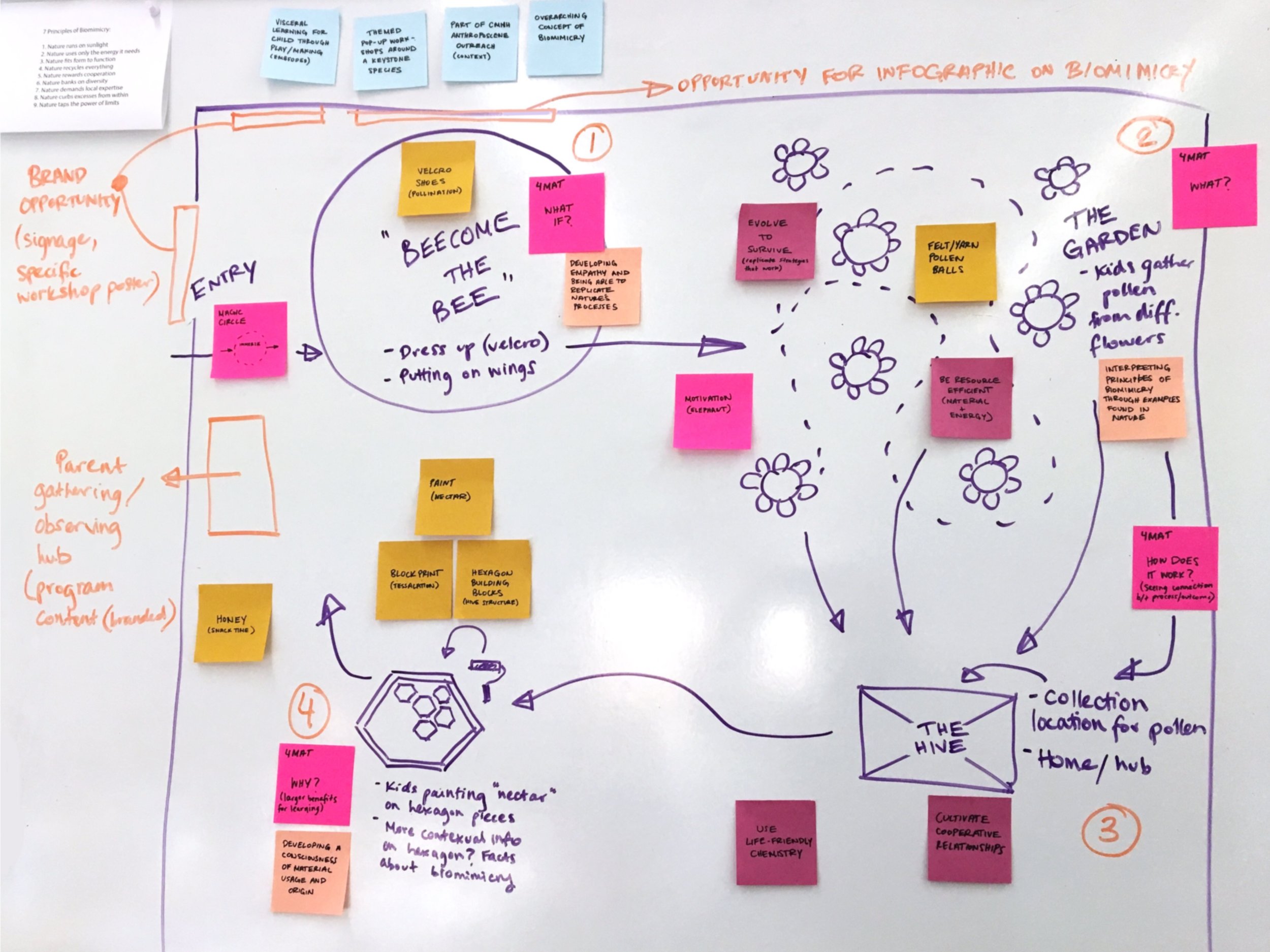
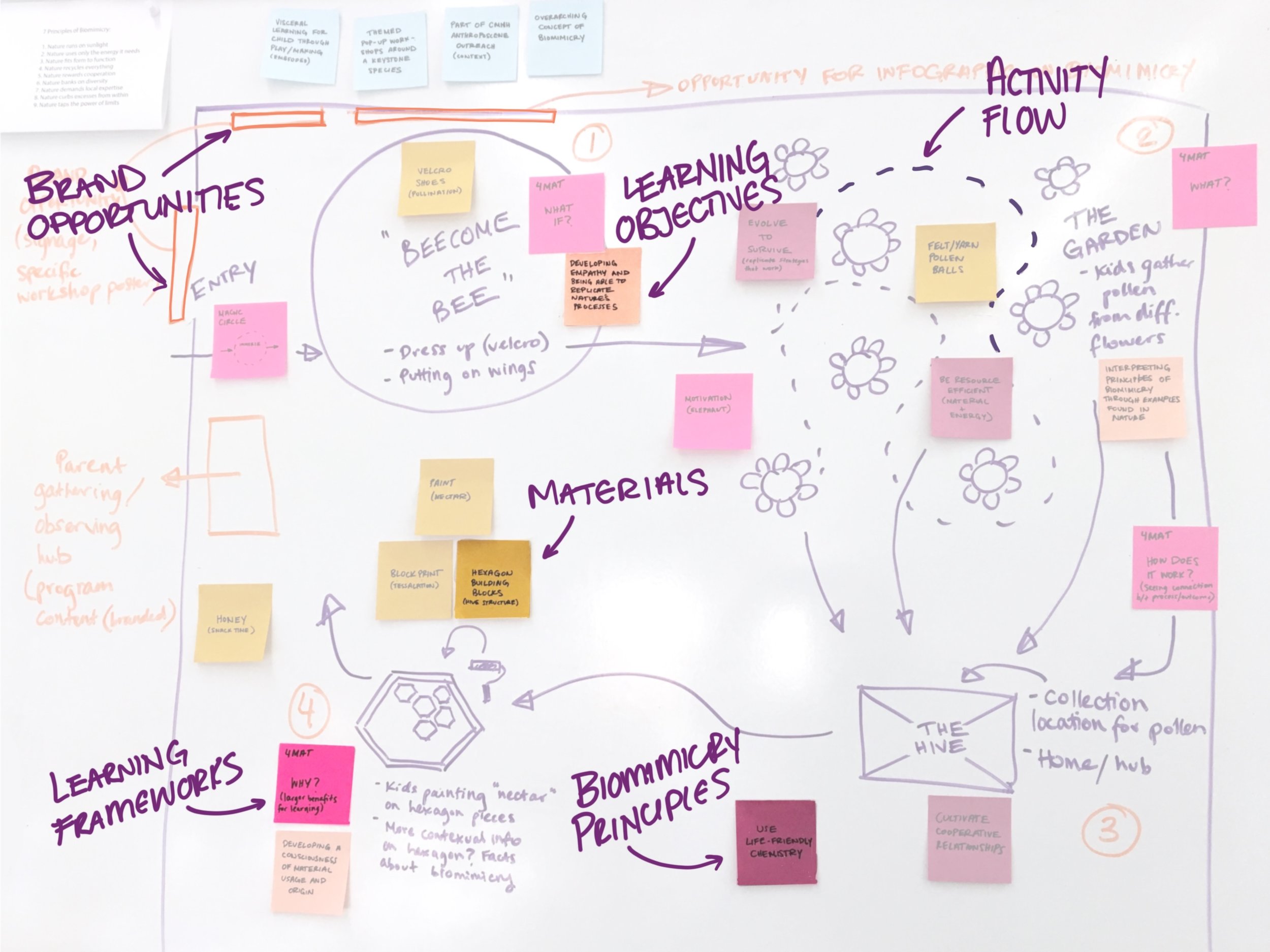
Drawing and Sketching
Alex and I visualized possible scenarios for how our workshop would go. As we drew and discussed we began to see where the holes and room for potential confusion might be. Alex began to visualize how some of the principles from our Worker Bee Workshop could be translated into future activities around different keystone species like starfish or woodpeckers.
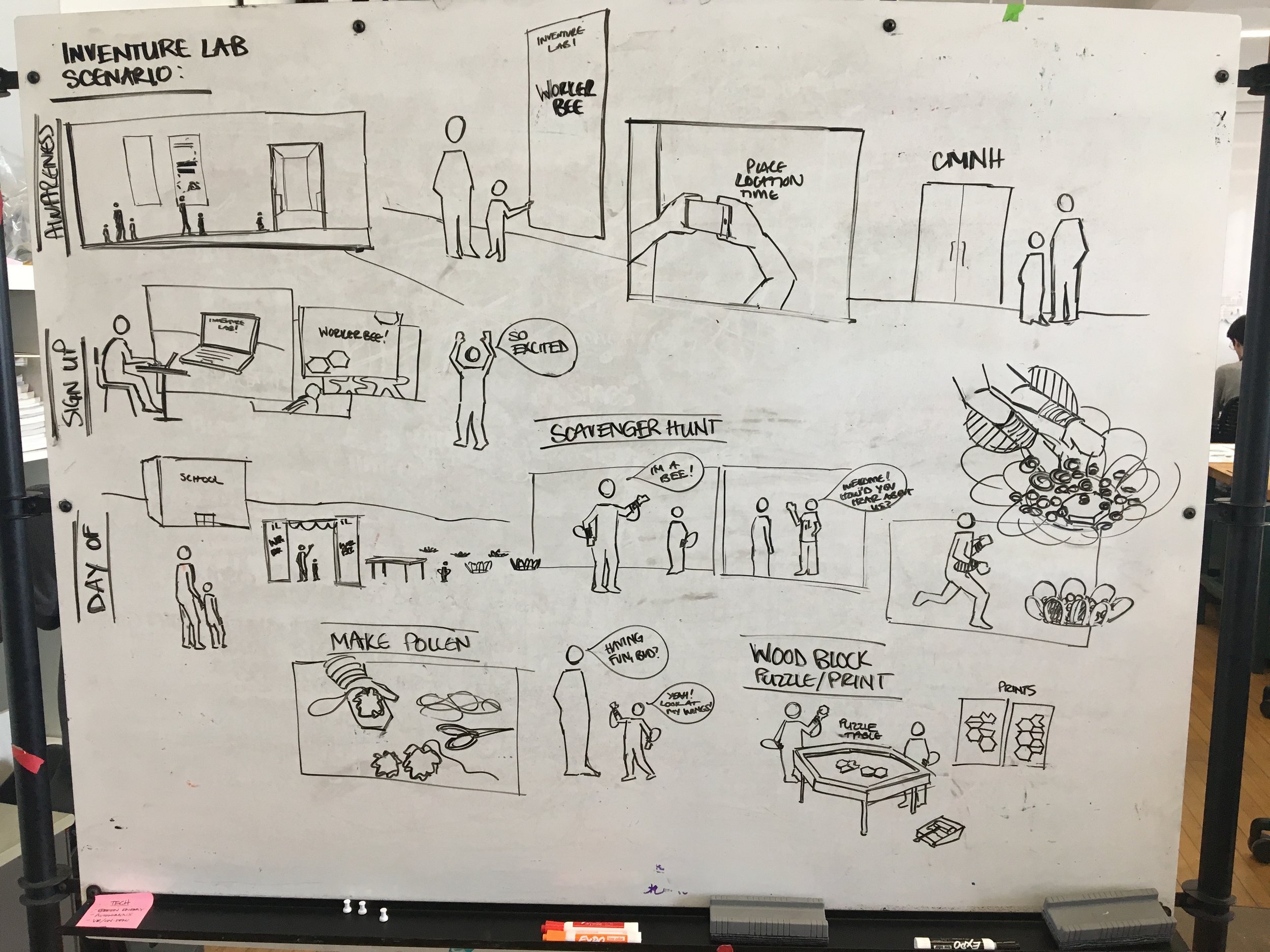
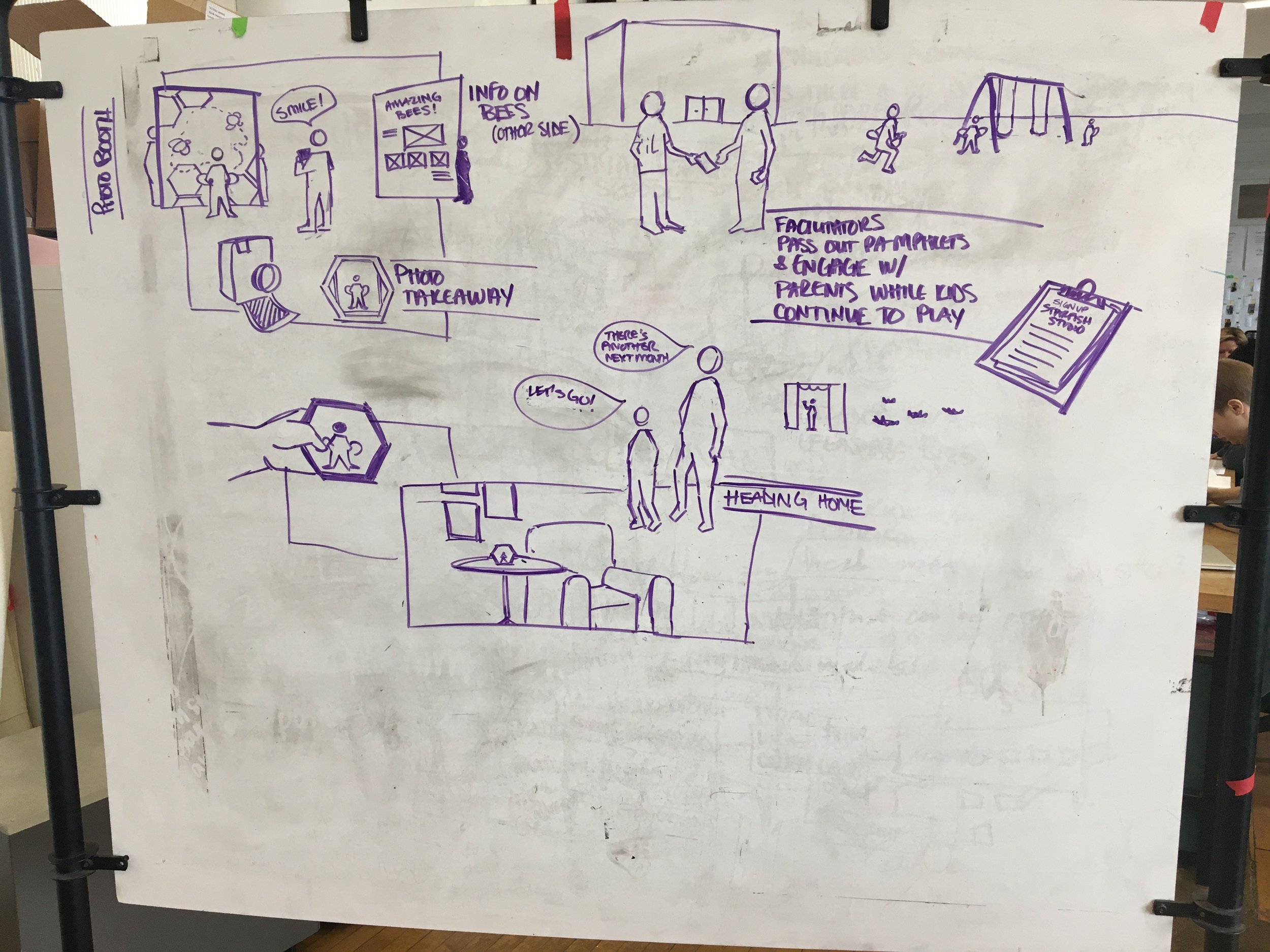
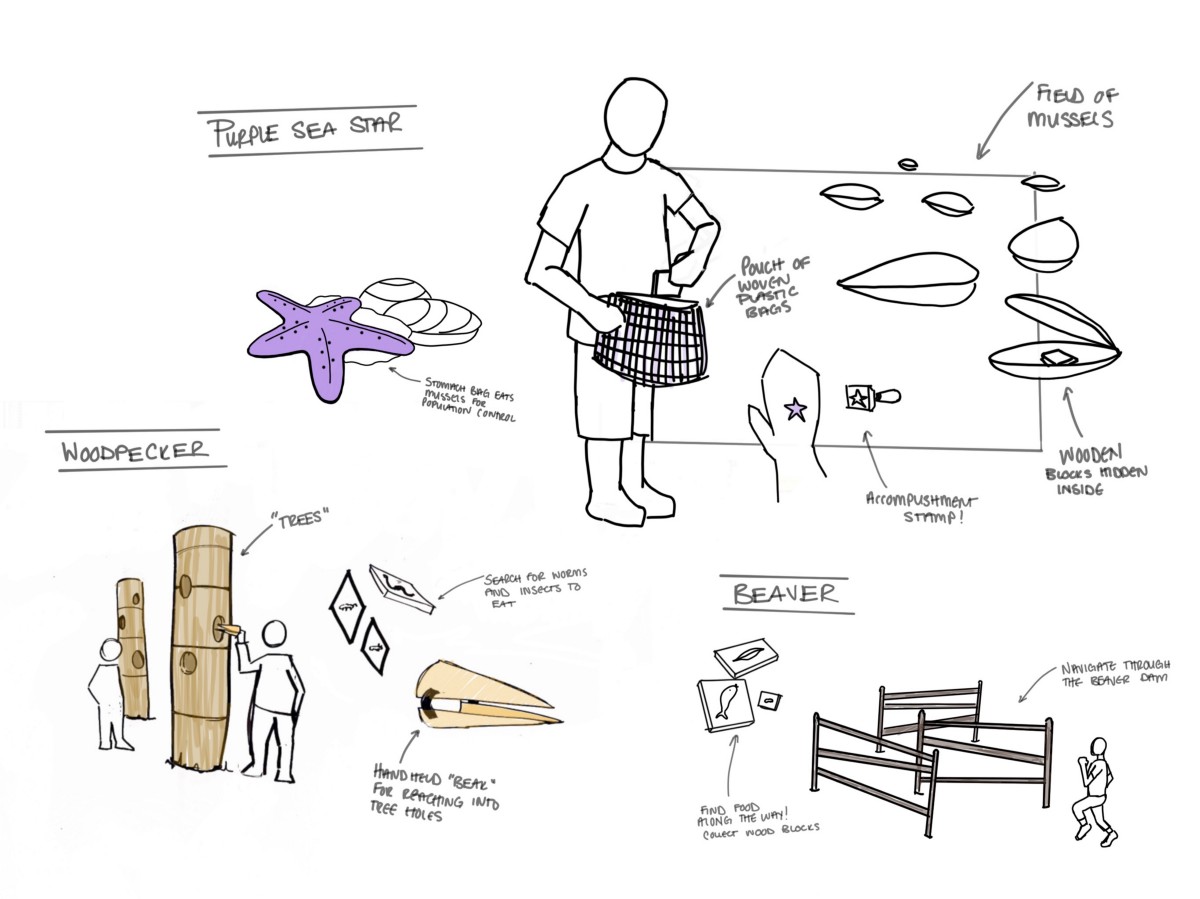
Visit to the Children's Museum
We visited the Children’s Museum of Pittsburgh multiple times throughout our project. On the first we met with one of their exhibition designers, Joy. On the second we explored the different activities and exhibits they had set up for kids again as inspiration and motivation.
Paper pulp making
Before settling on biomimicry as our theme of focus we did extensive research into other reuse and sustainability-focused activities. Visit our blog for more info!
Reading stories
One of the first things we did as a team was visit the children’s section of the Carnegie Library in Oakland and read books that teach kids about sustainability. We needed to understand how others were approaching the conversation with a younger age group and how we could integrate this approach into a more interactive setting.
















